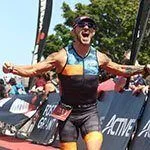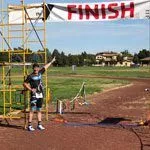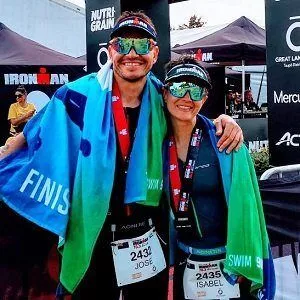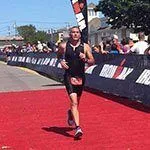Understanding Your 80/20 OCR Strength Workouts
The strength-training component of this training plan was created by Dr. AJ Gregg DC CSCS of Hypo2 Sport in Flagstaff, Arizona, to prepare athletes for the specific demands of Spartan Race obstacle challenges. This document offers basic guidelines that will help you complete the workouts successfully.
There are three type of strength workout in the plan. They are as follows:
- Strength MAX – Focused on developing maximal strength and power
- Strength Endurance – Focused on moderate- to high-intensity interval training with moderate durations and active recovery
- Strength Conditioning – Focused on increasing muscular endurance/fatigue resistance with longer-duration circuits while also developing OCR-specific skills
- Anaerobic Power (Long Course Only) - Focused on increase intensive fatigue resistance while also developing OCR-specific skills
For the most part, workouts of each type are the same each time you do them throughout the nine-week program. The progression comes from pushing your performance level further as your fitness level increases. This is accomplished by performing your circuits faster, performing more repetitions during your intervals, and finishing at a lower level of perceived effort.
The term “RepsSubMax” refers to the maximum number of reps of a particular exercise you could complete. For example, if a given workout instructs you to perform “2 RepsSubMax” of the Pull-Up with Hang Exercise, you are to complete two fewer repetitions of this particular exercise than the maximum number you could complete without resting (a two-rep margin). You may perform max-rep tests of the various exercises included in the plan before you start it to determine your limit in each or just go by feel.
Percentages refer to your one-repetition maximum (1RM) load for a given exercise. For example, if you are instructed to do the Squat exercise at 70%, this means it should be done with 70% of the maximum weight you could squat one time. Again, you may either determine your 1RM through testing or go by feel. This handy little online calculator will help you with the math: https://exrx.net/Calculators/OneRepMax
“BW” stands for “bodyweight.” For example, if you are instructed to do the Goblet Squat exercise “@ 25% BW” and you weigh 160 lbs, you will do it holding a 40-lb kettlebell.
Guidelines for sets and reps are given in this format: 5 x 5. In this specific example, you are to complete five sets of five repetitions.
Some exercises are time-based. For example, “45s moving time” means you are to continue doing the exercise for 45 seconds in total, pausing the clock if you need to stop and rest before 45 seconds are up. Instructions like this—“7s on/3 s off” mean you are to do the exercise for (in this case) seven seconds, then rest for three seconds to complete one rep.
Exercises listed with no space between them are to be done as rounds, meaning you don’t rest between them and you complete one set of each exercise before going back and doing additional sets (if multiple sets are prescribed). Wherever you do see a line of separation between groups of exercises, you may rest as long as you feel is necessary to be ready to continue the workout.
Links to video demonstrations of all exercises included in each workout are provided in the “Pre-Workout Comments” area.












































































